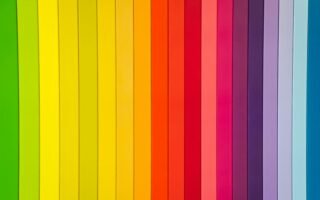In the world of film and entertainment, there are two terms that are often used interchangeably but actually have significant differences: VFX (Visual Effects) And CGI (Computer-Generated Imagery). Both have a very important role in creating stunning visual effects on the screen, but have differences in terms of process, use and final results.
This article will discuss in detail about difference between VFX and CGI, as well as explaining why understanding these two terms is so important, especially for professionals in the entertainment, film and digital media industries.
What are Visual Effects (VFX)?
Visual Effects (VFX) is a technique used to create or manipulate images or videos that cannot be taken directly through a camera. VFX is a process that involves various techniques for adding certain visual elements to a film or video production. This includes physical effects such as explosion, building damage, extreme weather, or even fantastic characters which cannot exist in the real world.
VFX also covers compositing, namely combining various visual elements into one natural-looking image. This may include combining real and digital images, or other effects that enrich the film’s visuals.
What is Computer-Generated Imagery (CGI)?
Computer-Generated Imagery (CGI) is a specific technique in VFX that refers to creating images or animations digitally using computer software. CGI produces computer-generated 2D or 3D images, which are often used to create objects, characters, or worlds that could not exist in the real world.
For example, characters like Gollum Of The Lord of the Rings or fantasy world in Avatar is the result of CGI, which is created with special software to create realistic or imaginative images. CGI is often used for animation, 3D films, and even video games.
Key Differences between VFX and CGI
1. Definition and Scope of Use
- VFX is a general term that covers a variety of techniques and processes for creating visual effects in films and videos. It includes CGI, but also includes practical effects such as prosthetics, make-up effects, image composition, and other visual elements produced after the shooting process.
- CGI is a part of VFX that specifically refers to images or animations created using computers. CGI refers to the digital creation of elements used in films or videos.
2. Manufacturing Process
- VFX often involve various visual elements, which can be practical effects (such as physical explosions captured on camera) or digital elements added after filming was completed. VFX is a term that covers the entire visual process involving image and video manipulation.
- CGI, on the other hand, focuses on creating completely computer-generated images or animations. CGI is usually used to create worlds or objects that cannot be found in the real world, and is often used in science fiction or fantasy films.
3. Use in Film and Media
- VFX used in a wide variety of films and media to add visual elements of depth and are often necessary to enhance the cinematic experience. VFX can include major effects such as explosion, complex camera movements, or even dramatic weather effects.
- CGI focusing more on creating digital characters, virtual worlds, and other 3D elements that are an integral part of modern film production. Movies like Avatar, The Avengers, And Transformers relies heavily on CGI to create the creatures and digital world.
4. Goals and Final Results
- VFX aims to create or enrich visual elements in films, both real and imaginative. The goal is to enhance the visual narrative and transport the audience into a more dramatic or fantastical world.
- CGI, meanwhile, is often used to create completely digital objects or characters, with the aim of providing visual elements that would be impossible to achieve physically.
Why is Understanding VFX and CGI Important?
Understanding the difference between VFX and CGI is critical for professionals in the entertainment industry, as these two techniques often work together to create stunning visual experiences. Behind the scenes, producers, directors and creative teams work with VFX creators and CGI specialists to plan and implement the best techniques for every element in the production.
1. Selecting the Right Technique for Each Need
If a filmmaker wants to create a fantasy world or digital creatures, CGI is the most appropriate technique. However, if they require dramatic effects involving physical elements (such as explosions or extreme weather), then VFX will be used more.
2. Collaboration Between Filmmakers and VFX Technicians
Today’s film industry relies heavily on collaboration between cinematography teams, VFX creators and CGI specialists to create perfect visuals. An understanding of these two techniques ensures that professionals can collaborate better and produce more impressive cinematic works.
3. Innovation in Visual Stories
By understanding these differences, filmmakers can more freely explore innovations in visual storytelling. Both have the ability to create very different elements, and both are essential to taking the story to the next level. Combining practical effects with CGI or VFX can produce more immersive and immersive visuals.
Examples of the Use of VFX and CGI in Famous Films
1. Avatar (2009)
This James Cameron film is a great example of the use of CGI to create the immersive world of Pandora, as well as realistic digital characters such as Na’vi. However, the film also relies on VFX to create dramatic weather effects and natural environments.
2. The Lord of the Rings (2001-2003)
In this trilogy, CGI is used to create digital characters such as Gollum and other creatures, while VFX is used to add visual effects such as explosions, large battles and extreme weather.
3. Avengers: Endgame (2019)
The film combines VFX and CGI to create huge battles, digital-like character effects Hulk And Thanos, as well as a fantastic world full of impressive visual elements.
Conclusion
Outline, VFX (Visual Effects) And CGI (Computer-Generated Imagery) are two different techniques, but complement each other in creating extraordinary visual experiences in the world of cinema. VFX is a broader term that covers a variety of visual techniques, including CGI, while CGI focuses more on creating digital images and animation using computers.
Understanding the differences between the two allows film and media professionals to more effectively plan and use the right techniques to create immersive and stunning visuals. Whether it’s for realistic effects, fantasy worlds, or digital characters, an understanding of both techniques is essential to producing quality works of entertainment.
FAQ
1. What is meant by VFX?
VFX (Visual Effects) is a technique used to add or change visual elements in a film or video that cannot be recorded with a camera, such as weather effects, explosions or fantastic creatures.
2. What is the difference between VFX and CGI?
VFX is a broad term that includes all visual effects in film production, while CGI is a technique in VFX that focuses on creating digital images and animation using computers.
3. How is CGI used in films?
CGI is used to create characters, objects, and worlds that could not exist in the real world, such as digital characters and 3D effects in science fiction or fantasy films.
4. Why is it important to understand the difference between VFX and CGI?
This understanding is important so filmmakers can choose the right techniques for each visual element, ensuring more effective collaboration between creative teams and VFX technicians.5. What is an example of a film that uses VFX and CGI successfully?
Some famous films that use these two techniques successfully are Avatar, The Lord of the Rings, And Avengers: Endgame, all of which rely on CGI and VFX to create impressive cinematic experiences.


